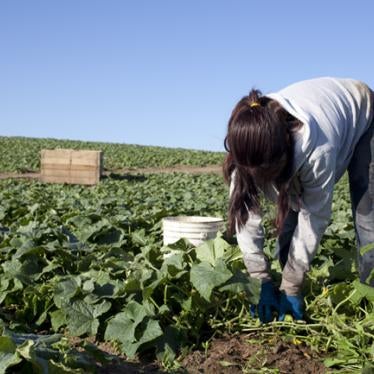President Barack Obama has announced a National HIV/AIDS strategy designed to carry the country’s policy through to 2020. The updated policy, positive in many ways, lacks one crucial element: the criminal justice system’s role in fueling HIV and AIDS. The new strategy calls for revision of HIV-specific criminal laws, but many other aspects of the criminal justice system have enormous impact on the HIV epidemic in the U.S. The groups most affected by HIV -- African-American men and women, men who have sex with men, people who use drugs, and transgender women -- are also disproportionately arrested, convicted and incarcerated for criminal offenses. This is no coincidence: these two disturbing truths are inextricably linked.
The racial disparities in HIV are stark and disturbing. African-Americans are 13 percent of the US population, but 56 percent of new HIV infections. Black men are diagnosed with HIV at 7 times the rate of white men; black women account for 64 percent of new HIV diagnoses among women. In some states the numbers are hugely disproportionate. In Louisiana, for example, African-Americans are 32 percent of the population but more than 70 percent of new HIV cases. The epidemic is most severe among men who have sex with men, and young black men are most heavily affected, acquiring HIV at more than double the rate of white men in the same age group.
This national plan, like the 2010 version, doesn’t shy away from the issue of race. One of the primary goals is to “reduce HIV-related disparities and health inequities,” with an emphasis on reducing transmission and improving outcomes among African-Americans and Latinos. Both versions discuss social factors that increase risk of HIV and impede access to health care such as poverty, unemployment, violence, and homelessness. Both plans recognize the importance of housing, jobs, mental health care, and substance use treatment to achieve President Obama’s objective of an “AIDS-free generation.”
But the criminal justice system is omitted from this discussion, even though arrest and imprisonment make all of these other factors more likely. It is well documented that incarceration makes peoplepoorer, less likely to have stable housing, and more prone to experience violence from police both in and out of custody-- and in the US, all of these are more likely to happen to African-Americans.
The 2010 strategy called for better HIV services in jails and prisons, and better linkage to care upon release. The new version calls for much the same thing, but fails to acknowledge the growing body of evidence that incarceration itself increases the risk of HIV and of poor treatment outcomes. Post-incarceration, the ability of people to stay in HIV care falls from 76 to 30 percent. For sex workers and people who inject drugs, fear of arrest drives them away from health care services, interrupts safety networks and increases their risk of violence at the hands of the police. One recent study, for example, looked at more than 400 injection drug users in Baltimore who were on HIV medications and whose virus levels had dropped to undetectable levels. But the levels of people who spent even a short time in jail were twice as likely to rise again.
LGBT people are disproportionately represented in both the HIV epidemic and in every aspect of the criminal justice system. LGBT youth, particularly youth of color, are over-represented in the juvenile justice system and more likely than heterosexual youth to be stopped by police. A recent national survey by Lambda Legal found that nearly three quarters of those they surveyed -- LGBT people and people living with HIV (the study grouped them together) -- had experienced face-to-face contact with police in the last five years. Of these, 1 in 4 reported experiencing police misconduct, ranging from verbal harassment to sexual assault.
HIV is alarmingly high among transgender women, with some studies showing that 1 in 3 are HIV-positive, and even higher among transgender women of color. Due to pervasive employment discrimination, transgender women are often forced to seek work in the underground economy, frequently as sex workers. Once someone is arrested for sex work, a criminal record dims the prospect for future employment, leading to a vicious cycle of poverty, incarceration and increased risk of HIV.
The failure to address the contribution of criminal justice issues to the HIV epidemic places the US well behind the curve in international health policy. Worldwide, more than 50 percent of new HIV infections are among these “key” populations-- sex workers, people who use drugs, men who have sex with men, transgender women, and prisoners-- who are subjected to more intensive scrutiny by law enforcement, criminalized, marginalized, or all of the above. The World Health Organization has developed comprehensive guidelines for essential health services and strategies for improving the legal standing of each of these populations.
Similarly, UNAIDS has stated that the criminalization of sex work, drug use and same-sex relationships among consenting adults hinders the delivery of effective HIV care and called on countries to work toward decriminalizing these activities.
We, along with 14 other national and local organizations who wrote to the Obama administration in May, had hoped the new HIV/AIDS strategy would support the growing national movement for criminal justice reform. We called for a federal interagency task force to examine the dangerous links between HIV and policing, arrest and incarceration and to develop recommendations for change at the national, state and local levels. We will not realize the goal of an AIDS-free generation until we address the role played by our criminal justice system in the epidemic.
McLemore is a senior health researcher at Human Rights Watch.







